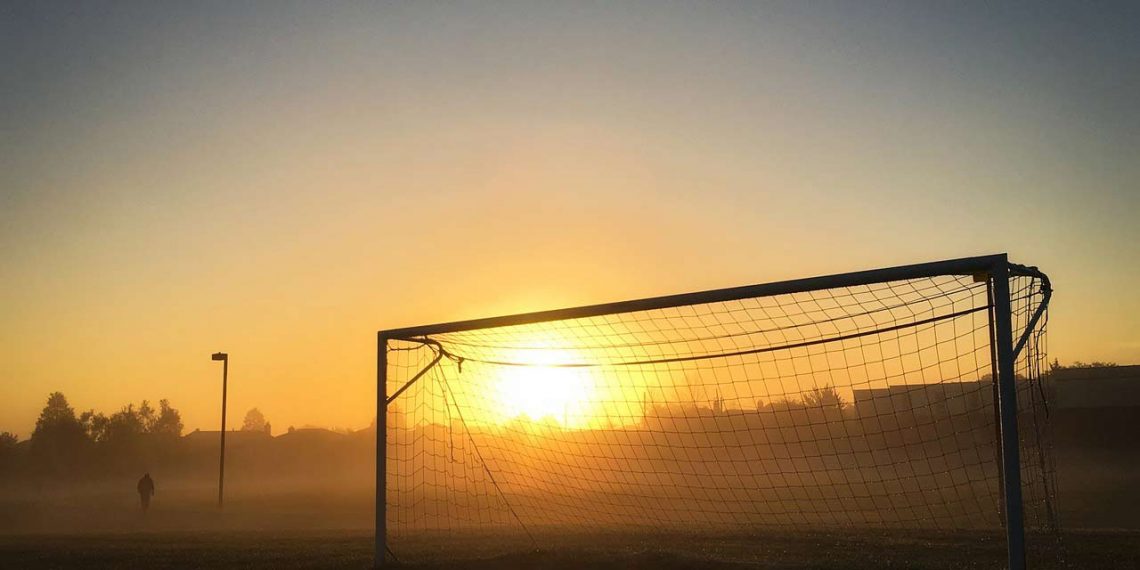It was different for sure but The challenges of the season didn’t damper the intensity of play or the enthusiasm of players. Teams were just as focused as in the past to prevail in their respective conferences.
Set Pieces – Soccer is a game of constant movement with the exception of restarts. Coordination, communication, and the timing of runs and passes into space are among the factors that are needed to maintain possession in the run of play. Productivity out of set pieces with clearly defined runs and ball placement was a big factor in the outcome of contests particularly in the early going when teams were trying to establish the rhythm they needed to generate goal scoring opportunities out of the run of play.
Penalty Kicks – Fouls in the box resulting in penalty kicks appeared to be more of a factor during the fall 2020 season than is normally the case.
Defense Ruled – Stability on the defensive side of the ball was huge in the early going particularly in women’s college soccer where there were a lot of 1-0 contests.
Learning Curves Were Costly – The conference only schedule in which teams for the most part only competed against league foes didn’t allow teams to get a few contests under their belts before getting into intense league play. This made it difficult for those teams that were in rebuild mode and facing a steeper than usual learning curve to generate momentum.
Absences – Programs, coaches and administrators did a good job of putting into place protocols that would keep players safe. Nonetheless, there were absences due to corona virus protocols in addition to the normal injuries that occur that resulted in some cancellations and also impacted the outcome of several contests.
A Tale Of Two Halves – Momentum often shifted significantly between halves of play. Putting together two consistent halves of play was a challenge that many teams faced throughout the season. Sorting out and settling into an appropriate balance between pressure on the offensive side of the ball and stability on the defensive side of the ball likely contributed to this.
Depth – As expected, depth was a factor as the season progressed. Coaches substituted more than in the past in part to keep fresh legs on the pitch and perhaps also to keep their rosters engaged as much as possible.
Big Play Ability – Impact players continued to make big time plays.
Playmakers in women’s soccer included Grace Collins (5g, 2a) TCU, Haley Hopkins (5g, 0a) Vanderbilt, Anna Podojil (4g, 2a) Arkansas, Sarah Sodoma (7g, 4a) Arkansas State, Brenna McPartian (8g, 5a) South Alabama, Malia Berkely (0g, 1a) Florida State, Brianna Pinto (6g, 2a) North Carolina, Emina Ekic (7g, 3a) Louisville, Jaelin Howell (4g, 2a) Florida State, Emily Fox North Carolina.
Playmakers in men’s soccer included Kimarni Smith (8g, 3a) Clemson, Valentin Noel (8g, 2a) Pittsburgh, Jack Lynn (7g, 0a) Notre Dame, Aris Briggs (5g, 3a) Georgia State.
Shot Stoppers – Keepers were difference makers.
Women’s Soccer – Sarah Fuller Vanderbilt (0.97 gaa), Emily Alvarado TCU (0.32 gaa), Megan McClure Arkansas State (0.18 gaa), Claudia Dickey North Carolina (0.50), Cristina Roque Florida State (0.55 gaa) were all rock solid.
Men’s Soccer – Tor Saunders Coastal Carolina (0.60), Alec Smir North Carolina (0.66 gaa), Andrew Pannenberg Wake Forest (0.84 gaa) were among the netminders who consistently came up with big saves.
Freshman Power – Freshmen were key contributors with several making big impacts.
Freshmen who made their presence known in women’s soccer included – Barbara Olivieri Texas A and M, Ava Tankersley Arkansas, Maddie Johnson Georgia State, Lia Godfrey Virginia, Makenna Morris Clemson, Christina Roque Florida State, Jody Brown Florida State, Sam Meza North Carolina, Talia DellaPeruta North Carolina, Marz Akins TCU.
Freshmen who made their presence known in men’s soccer included – Bertin Jacquesson Pittsburgh, Cristian Escribano Wake Forest, Garrison Tubbs Wake Forest, Mael Couteau Coastal Carolina.
Contrasting Styles Of Play – The ability to adjust to different styles of play of opponents is always a critical success factor as the season progresses and can result in matchup problems. However, since most teams played a schedule that included only teams within their conference with whom they were familiar it was less of a factor during the fall 2020 than it normally is.
Expectations – The Pittsburgh (ACC) and Notre Dame (ACC) men’s teams and the Vanderbilt (SEC), TCU (Big 12) and West Virginia (Big 12) women’s teams were among the programs that exceeded preseason expectations. Texas Tech (2-5-2), Florida (2-8-1) and Troy (2-9-1) were among the women’s programs who didn’t play to expectations. Georgia Southern (0-6-0) was among the men’s programs who never seemed to jell. Injuries and absences due to corona virus may have contributed.
Great Season Ending Matchups – There was a lot to like about the intensity, the level of play, and the excitement surrounding the season ending matches in the ACC (men’s and women’s), SEC (women’s), Big 12 (women’s) and Sun Belt (men’s and women’s).
The ACC women’s championship contest matched preseason number one ranked North Carolina against preseason number two ranked Florida State. Florida State prevailed 3-2 to secure their second ACC Tournament Title in the past three years. Florida State concluded the year as the number one ranked team in the United Soccer Coaches Poll. North Carolina was ranked as the number two team.
The Sun Belt women’s tournament championship contest featured South Alabama the number one seed in the East Division against Arkansas State the number one seed in the West Division. South Alabama prevailed 2-1 behind two goals from junior Morgan Cross.
The SEC women’s tournament final matched number seven seed Vanderbilt with number one seed Arkansas. Vanderbilt prevailed 3-1 winning four contests in the tourney to secure the program’s first SEC Tournament championship since 1994. Vanderbilt was ranked as the number eight team in the country in the final United Soccer Coaches poll. Arkansas was ranked as the number seven team.
Big 12 women’s championship. TCU and West Virginia faced each other in the season ending contest with the Big 12 Conference women’s regular season title on the line. TCU prevailed 1-0 to win the program’s first-ever Big 12 Conference championship. TCU was ranked as the number three team in the country in the final United Soccer Coaches poll. West Virginia was ranked in the number four spot.
The ACC men’s tournament final matched Clemson and Pittsburgh. Clemson prevailed 2-1 to win the program’s fourth ACC Tournament championship and the second under head coach Mike Noonan. Clemson ended the 2020 fall season ranked as the number one team in the United Soccer Coaches Poll while Pitt was ranked as the number two team in the county.
The Sun Belt men’s tournament final matched Georgia State against Coastal Carolina. It was the fourth time in the past five years that they faced each other with the tournament championship on the line. The contest was scoreless after 110 minutes of play. Coastal Carolina prevailed 4-3 in a penalty kick shootout. The Chanticleers were ranked as the number five team in the fall 2020 season by the United Soccer Coaches.





